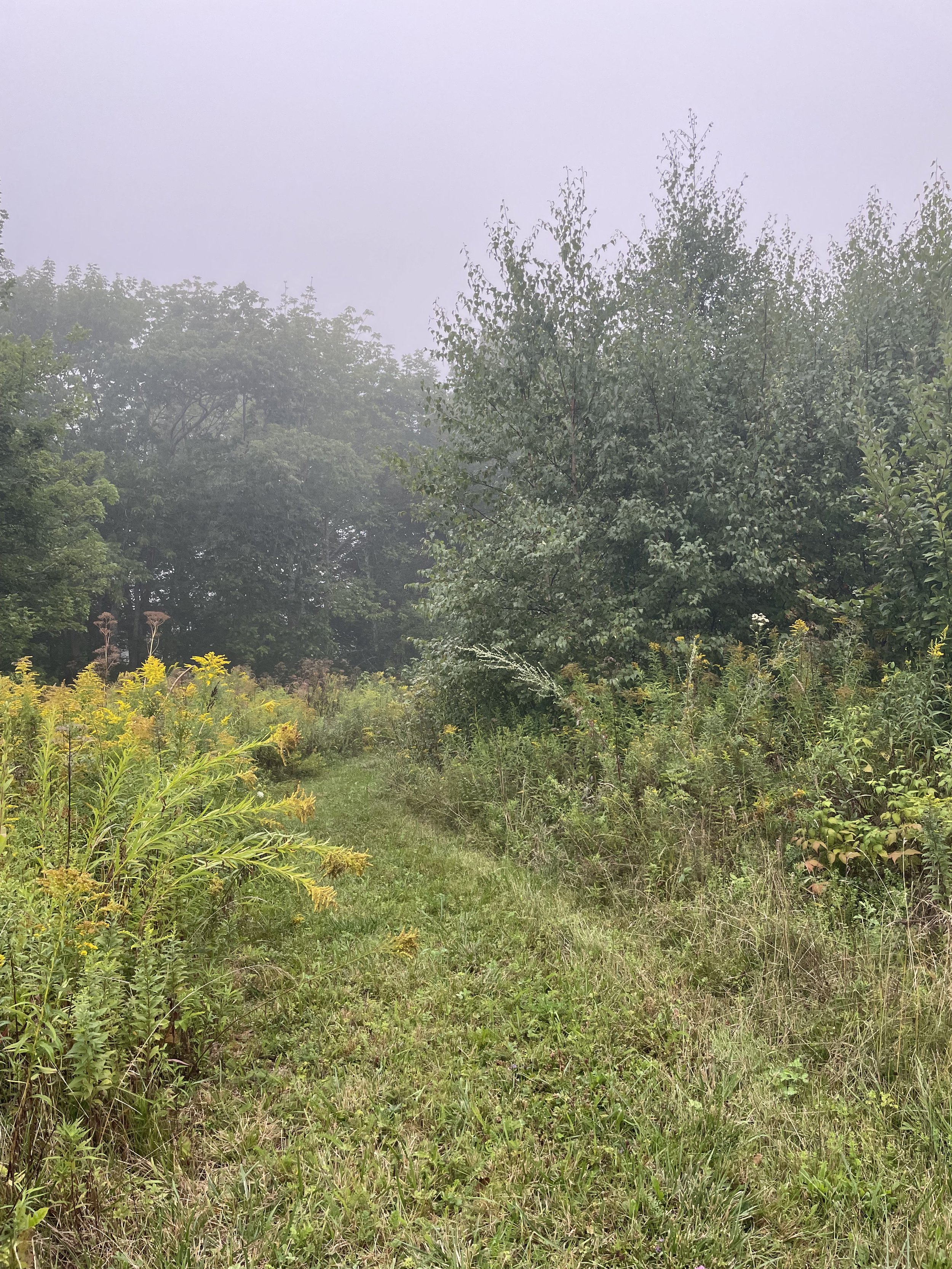Gilles Clément’s Planetary Garden
As gardeners, we are conditioned to approach gardens “appropriately,” which means that we learn how to impose our designs on a landscape that is always in flux. For instance, it’s been my mission to keep the goldenrod out of the sweet fern, to pull up native jewelweed where I have decided it doesn’t belong. In his 1999 book of writings, The Planetary Garden, Gilles Clément takes a different tack. What if, he asks, we use our eyes, learn to listen, learn to be present with what is in the process of becoming? Once he did that, he writes, “From this familiarity with things observed came a sense of solitude, about which I can only say that it has brought me closer to what we generally call the landscape.”
My process here in Lincolnville has been similar. Over the years I’ve learned a few things about the asters and goldenrods, that though they are prime habitat for pollinators, they can take over a field pretty quickly. The meadow that was once all daisies, buttercups, red clover and Queen Anne’s Lace in the early summer, in recent years is given over to the more robust fall-blooming forbs. Things are at a tipping point, with alders sprung up where I don’t want them at all, and an ash smack in the middle of the meadow. And that in spite of the fact that I have cut it back every year since it first sprouted. Unless I want alders and trees everywhere, I’ll have to go back to mowing the meadows once a year, sometime between now and next April.
I’m aiming for diversity of plant life that supports diversity of animal life, and have been happy this year to discover cracked-open mussel shells on the pond bank because that means there’s a mink somewhere about. A flock of 16 turkeys visited the rain garden for the abundance of seeds and insects it offers, and left me a couple of feathers as a thank you. My neighbor saw a coyote the other morning. Every day brings something new, as I try to balance letting the landscape take its course, against finding a few spots here and there that I can “edit” for aesthetic pleasure.
In this I am grateful for James Golden’s book, The View from Federal Twist, which led me to The Planetary Garden. Both will inform my work going forward, and if you are as curious as I am about how we can live in harmony with all the species of life on earth, you’ll want to read them. None of us can do everything, but each of us can do something.
